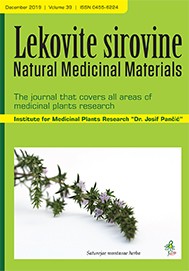Institute for Biological Research “Siniša Stankovic“, University of Belgrade , Belgrade , Serbia
Institute for Biological Research “Siniša Stankovic“, University of Belgrade , Belgrade , Serbia
Institute for Biological Research “Siniša Stankovic“, University of Belgrade , Belgrade , Serbia
Institute for Biological Research “Siniša Stankovic“, University of Belgrade , Belgrade , Serbia
Institute for Biological Research “Siniša Stankovic“, University of Belgrade , Belgrade , Serbia
Institute for Biological Research “Siniša Stankovic“, University of Belgrade , Belgrade , Serbia
Institute for Biological Research “Siniša Stankovic“, University of Belgrade , Belgrade , Serbia
The impact of ploidy level on both the regenerative potential under in vitro conditions and the production of major bioactive specialized metabolites, such are iridoids and xanthones, was examined in Centaurium erythraea Rafn. Shoot regeneration frequency was genotype dependent, but not affected by explant ploidy level. In most cases, the regenerated shoots of autotetraploid (4x) genotypes were more robust than diploid (2x) ones. Regeneration efficiency of root explants declined from the apical to the basal root segment. Shoot and root biomass production of two month-old shoots was not significantly different between 2x and 4x genotypes. Both 4x and 2x genotypes were characterized by the predominance of secoiridoid glucoside gentiopicrin in shoots and roots, which is followed by sweroside and swertiamarin. Loganic acid, loganin and secologanin were much less abundant. Methylbellidifolin was the major xanthone in both shoots and roots. Diploid plants showed higher biosynthetic capacity for the production of secoiridoids and xanthones in both shoots and roots. Results highlight a higher potential of diploid C. erythraea genotypes for biotechnology-based sustainable production of secoiridoids in comparison to tetraploid genotypes.
This is an open access article distributed under the Creative Commons Attribution License which permits unrestricted use, distribution, and reproduction in any medium, provided the original work is properly cited.

The statements, opinions and data contained in the journal are solely those of the individual authors and contributors and not of the publisher and the editor(s). We stay neutral with regard to jurisdictional claims in published maps and institutional affiliations.